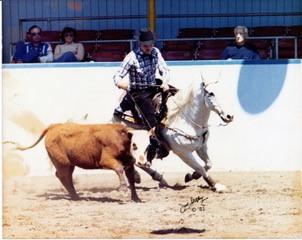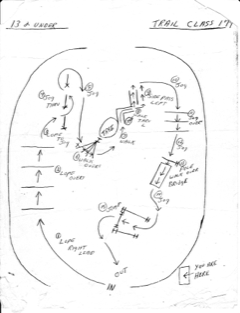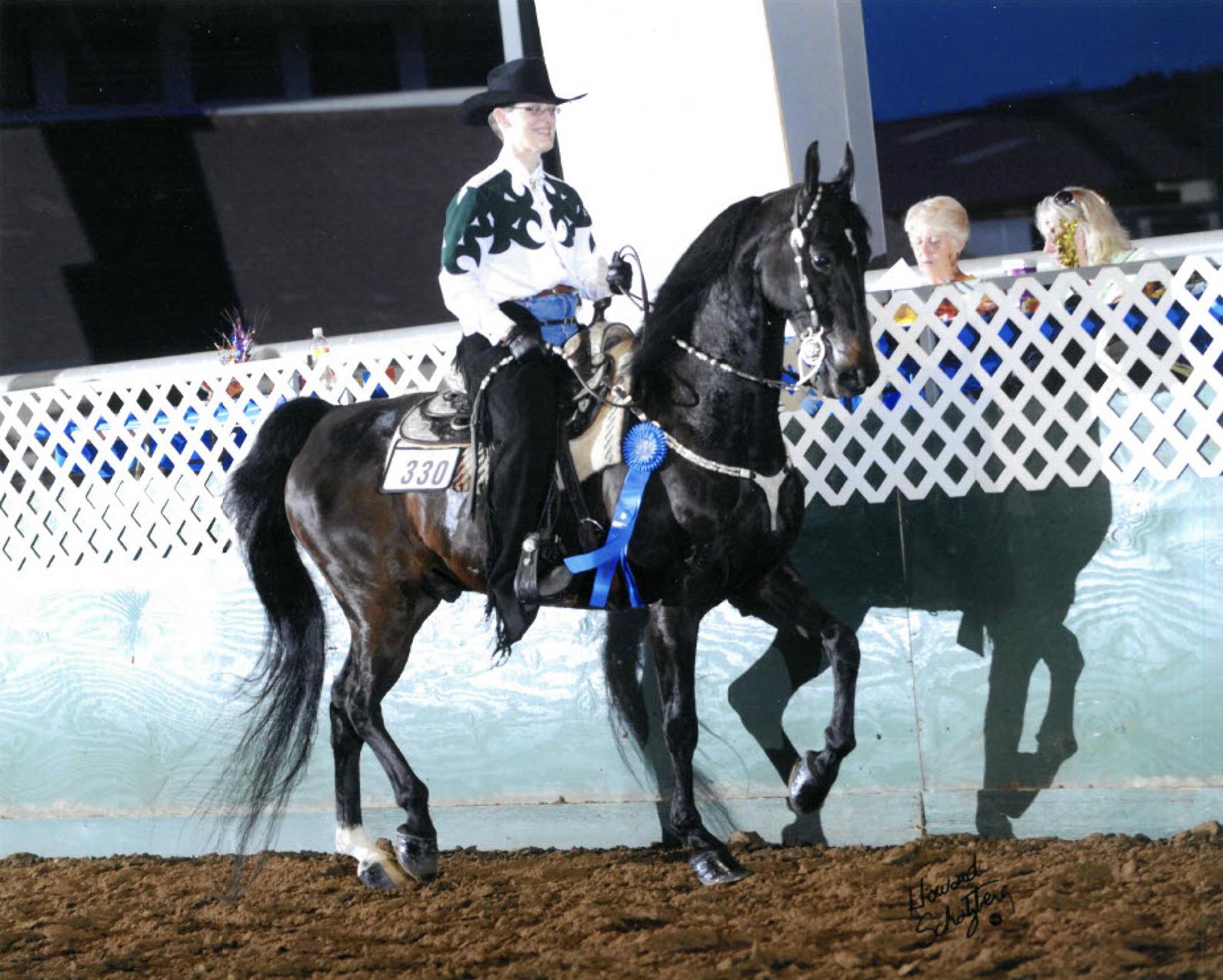Since the 1980s, the Western division has seen many changes in competition and community. Some of these changes have been more logistical, such as the addition of new sections and classes, and changing competition locations.
Michael Damianos, a professional horse trainer and USEF-licensed ‘R’ Arabian, Western, and Reining judge, has been involved in the equestrian world for over 50 years. He explained that the center of the Western showing community has moved east over the years.

“In the 80s or even before, it seemed like California was where the action was in Western showing,” Damianos said. “There's probably more location diversity now, because back then, there were less places to go for major horse shows. The Cow Palace was the ultimate show back then in San Francisco. Now…the ultimate events, they're more in the center of the country now. They're not in California. They're in Oklahoma City and Fort Worth and Tulsa.”
With the increased distribution of Western showing came more distinct show features, Damianos explained.
“Instead of these open shows being the center of attention for Western showing, breed shows became more of the center,” Damianos said. “I think that the shows in the 80s were a little more geared to spectators. There was much more pomp and circumstance than today.”
In the 1980s, reining was the most popular section in the Western riding community. Nowadays, however, the Western community is seeing ranch riding rise in popularity.
“Reining has, at least at the weekend rider level, started to tail off a little due to the

ranch section, which didn't exist in the 80s,” Damianos said. “And ranch riding…has become incredibly successful and popular in the last 10 years.”
This changing perception within the Western competition space means that there is an increasing accessibility of classes for more riders and horses to compete in. Garn Walker, a USEF licensed ‘R’ Morgan judge and professional horse trainer centered in the Morgan breed for over 30 years, explained that Western riding has been more recognized over the years for its affordability and potential.
“Around the 80s is where everybody actually started breeding and using horses for Western. Before then, if it didn't make an English horse, then they moved it down to Western,” he said. “There weren’t a lot of Western horse trainers. Their background was more in English, and that's when the shows were 75% English horses. Now, in this day and age, it's the Western horse and the hunter horse that carry the horse show.”
Janet Thompson said that the ranch section’s diverse classes and growing popularity are “really transforming” Western riding, making horses accessible to more people.
“There's all kinds of levels on which you can participate,” she said. “You can show your horses, but you don't have to have fancy equipment. In fact, you don’t need equipment with silver on…so there's a cost break for people if they're looking to not have to spend a ton of money. It’s not judged on how beautiful your horse is, but, does your horse do the job? So…it can be a horse that is in your backyard.”
The experience of Janet Thompson, an American Saddlebred and Western dressage competitor, exemplifies this widening acceptance of Western riding. Thompson started riding American Saddlebreds at age eight and has been competing in a variety of Saddlebred sections since. Thompson has also participated in the Saddle & Bridle Shatner Western Pleasure Finals (named after the famous actor and avid equestrian, William Shatner) held annually at the St. Louis National Charity Horse Show.
“I got kind of hooked on the Saddlebreds and realized at some point that Saddlebreds don't necessarily have to just do saddle seat; they can do other things,” Thompson said.
Thompson started getting into Western riding after trying and failing to train one of her horses to compete in the five gaited section.

“I took him to a trainer, a dear man named Don Hulse, and…he was very kind, but he said, ‘This horse is not going to do this…You should take him home. He will not hurt you. You will have fun with him.’ I had more than fun with him,” Thompson said. “Another friend and mentor, Jerry Stone, who was a quarter horse/reining trainer and a horseshoer, helped me start him reining. And this little horse that, essentially, got kicked out of class because he wasn’t going to make it as a saddle seat horse went on to win all three divisions of the Saddle & Bridle Western Finals. He won the adult, he won the junior rider, and he won the working.”
Thompson urged those in the equestrian community to be more open to the disciplines they normally would not consider for their horses, saying that increased Western discipline consideration will add depth to what trainers can do.
“We need to be more mindful about what path we encourage horses to take earlier on, rather than saying, ‘Well, if they flunk out at one thing, maybe they can be a Western horse.’ I think if we look at them critically and say, ‘Gosh, this horse has a good mind or has a good way of going for this discipline, maybe that could be a good job for him or her,” Thompson said.
Thompson also explained that Western riding is often “less threatening” to older riders.
“Maybe they wouldn't have to learn how to post. Maybe they don't need to go fast. Maybe they don't need to jump. Maybe they don't need to do all those other things that might scare somebody who's older and less secure in their saddle,” Thompson said. “I think it's a great way to expand the group of people who are showing horses and also expand the competition opportunities for the horses.”
This expansion of horse show participants also has the potential to change the social dynamics of horse shows—something that Walker and Thompson have already witnessed over the years. For example, Walker explained that people have gradually begun to socialize more outside of horse shows as opposed to during them.
“The spectators go up and they just watch their horses go. They really don't sit in the stands and watch the entire show. You see your horse go, you go back and sit at the barn, and you talk to your friends on the way back. Or you are all done that night and you don't have any classes, so you go out to dinner rather than going to the horse show,” Walker said.
No matter how it is structured, though, the social aspect of horse shows has always been a constant.
“I think that's why people go to horse shows, partially, is to be with their friends, to be with people that like the same things they do, do the same things they do, support them in what they do,” Thompson said. “Why would we do something if we're not around our friends? That's just not fun. This ranch section gives us an opportunity to really expand the community.”
Walker said the future of Western riding is “huge,” hoping for more shows across the country.
“The western discipline is going to continue to grow. It's a discipline that most people love to show,” Walker said. “It's been a journey to train these horses for 50 years and see where you are now compared to where you were back in the 70s and 80s and 90s.”
“I've been fortunate to see the trajectory of that discipline,” Thompson said. “Now, [Western horses] are at every major horse show in the country. This is something that is here to stay.”
US Equestrian offers the USEF Western Equitation Medal Program and Open ranch classes for licensed competitions to run. To find more information about adding these classes to your prize list, please click here.


